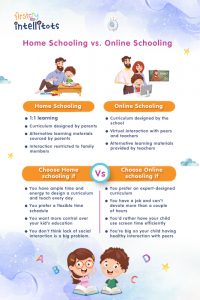Mastering Online Learning Essential Tips for Students
Embarking on Your Online Learning Journey:
Entering the realm of virtual education requires a different set of skills and strategies. Here are some essential tips to help you navigate and excel in your online learning experience.
1. Creating Your Dedicated Study Space:
Set the stage for success by carving out a designated study area in your home. This space should be quiet, organized, and free from distractions. Whether it’s a corner of your room or a cozy nook, having a dedicated study space helps signal to your brain that it’s time to focus.
2. Establishing a Consistent Routine:
Online learning offers flexibility, but a structured routine is key to staying on track. Set regular study hours that align with your course schedule. Treat these sessions like traditional classes, logging in at the same time each day. Consistency breeds discipline and helps maintain a sense of normalcy.
3. Engaging Actively During Online Classes:
Don’t be a passive observer—actively participate in your online classes. Take notes, ask questions, and contribute to discussions. This not only enhances your understanding of the material but also fosters a deeper connection to the subject matter.
4. Leveraging Technology Tools for Learning:
The digital landscape is filled with tools to enhance your learning experience. Explore platforms like Google Drive for organizing notes, Zoom for virtual meetings, or Khan Academy for supplementary lessons. These tech-savvy tools are your allies in the world of online education.
5. Practicing Effective Time Management:
With the freedom of online learning comes the responsibility of managing your time effectively. Use tools like calendars or apps to schedule study sessions, set deadlines for assignments, and track your progress. Prioritize tasks based on urgency and importance to stay organized.
6. Cultivating Self-Discipline and Motivation:
Online learning requires a high level of self-discipline. Stay motivated by setting goals and rewarding yourself for achieving milestones. Break down larger tasks into manageable chunks, and tackle them one step at a time. Remember, you are the captain of your learning journey.
7. Engaging in Peer Collaboration and Discussion:
While the virtual classroom may lack face-to-face interaction, it doesn’t mean you’re alone. Participate in online forums, group chats, or virtual study groups with your peers. Collaborative learning not only enhances your understanding but also fosters a sense of camaraderie.
8. Practicing Active Learning Techniques:
Move beyond passive reading and engage with the material actively. Summarize key points in your own words, create flashcards for quick review, or teach concepts to a virtual study buddy. These techniques reinforce learning and improve retention.
9. Seeking Clarification and Support When Needed:
Don’t hesitate to reach out to your instructors or classmates if you have questions or need clarification. Most online courses offer discussion boards, email, or virtual office hours for assistance. Asking for help is a sign of strength, not weakness.
10. Embracing Flexibility and Adaptability:
Online learning environments can change rapidly, so it’s important to remain flexible. Be open to new technologies, learning methods, and course structures. Adaptability is a valuable skill










